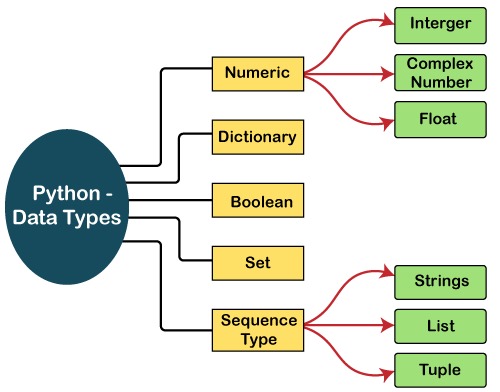Python, with its simplicity and versatility, has become one of the most popular programming languages for data manipulation, analysis, and application development. At the heart of Python programming lie data types and variables, essential components that enable developers to manage and process data effectively. In this blog post, we’ll delve into Python’s data types, variables, and basic operations, providing insights into their usage and importance in programming.

Understanding Python Data Types
Python is a dynamically typed language, meaning you don’t need to explicitly declare the data type of a variable. Instead, Python infers the data type based on the value assigned to the variable. Here are some fundamental data types in Python:
- Integers (int): Integers represent whole numbers, both positive and negative, without any decimal point. For example,
5,-10, and1000are integers. - Floating-point numbers (float): Floating-point numbers represent real numbers and include a decimal point. For example,
3.14,-0.001, and2.0are floating-point numbers. - Strings (str): Strings are sequences of characters enclosed within single quotes (
') or double quotes ("). For example,'hello',"Python", and'123'are strings. - Boolean (bool): Boolean data type represents truth values,
TrueorFalse, used in logical operations and control flow. - Lists: Lists are ordered collections of items, which can be of mixed data types. They are mutable, meaning their elements can be changed after they are created.
- Tuples: Tuples are similar to lists but immutable, meaning once created, their elements cannot be changed or modified.
- Dictionaries: Dictionaries are unordered collections of key-value pairs, allowing efficient data retrieval based on keys.
Variables in Python
Variables are used to store data values. In Python, variables are created when they a
re first assigned a value. You can assign values of any data type to variables without specifying the data type explicitly. Here’s how you declare variables in Python:
x = 5 # x is an integer
y = 3.14 # y is a float
name = ‘John’ # name is a string
Basic Operations
Python supports various operations for manipulating data. Here are some basic operations performed on different data types:
Arithmetic Operations:
- Addition (‘
+‘) - Subtraction (‘
-‘) - Multiplication (‘
*‘) - Division (‘
/‘) - Modulus (‘
%‘) - Exponentiation (‘
**‘) - Floor Division (‘
//‘)
a = 10
b = 3
print(a + b) # Addition
print(a – b) # Subtraction
print(a * b) # Multiplication
print(a / b) # Division
print(a % b) # Modulus
print(a ** b) # Exponentiation
print(a // b) # Floor Division
String Operations:
- Concatenation (‘
+‘) - Repetition (‘
*‘) - Indexing and Slicing
str1 = ‘Hello’
str2 = ‘World’
print(str1 + ‘ ‘ + str2) # Concatenation
print(str1 * 3) # Repetition
print(str1[0]) # Indexing (prints ‘H’)
print(str2[1:3]) # Slicing (prints ‘or’)
List Operations:
- Indexing and Slicing
- Concatenation (
+) - Repetition (
*) - Appending and Removing Elements
my_list = [1, 2, 3, 4, 5]
print(my_list[0]) # Indexing (prints 1)
print(my_list[1:3]) # Slicing (prints [2, 3])
print(my_list + [6, 7]) # Concatenation
print(my_list * 2) # Repetition
my_list.append(6) # Append 6 to the list
my_list.remove(3) # Remove 3 from the list
Conclusion
Understanding Python data types, variables, and basic operations is essential for any Python programmer. With its flexible data structures and powerful operations, Python enables developers to build robust and efficient solutions for various applications, including data analysis, web development, machine learning, and more. By mastering these fundamental concepts, you’ll be well-equipped to tackle a wide range of programming challenges and unleash the full potential of Python programming.